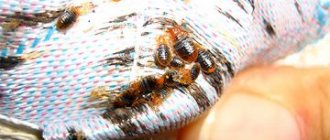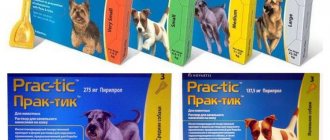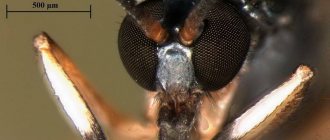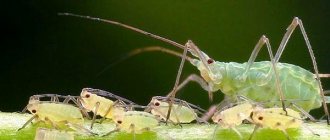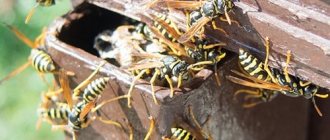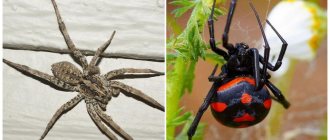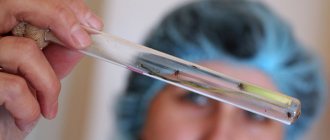Drill-driver DEKO GCD12DU3 Li-ion, 1x1.5Ah, Replaceable battery, 12 V, 32 Nm, 1 battery
1697 ₽ More details
Drill/driver DEKO DKCD16FU Li-ion in case + 63 accessories, 2x1.5Ah, Replaceable battery, 16 V, 32 Nm, 2 batteries
3168 ₽ More details
Tanning oils
Small in size, with a bright interesting color, attracting attention - this is the blister beetle. But appearances are deceiving and touching an insect in some conditions is life-threatening.
Blister beetles can be very dangerous
What are the appearance features
In the photo, the blister beetle shows a bright color with a metallic tint. The head is narrowed, antennae are also located here, there are no wings, but there are flexible elytra, but they cover a small part of the chest. The total length of the body is two centimeters, it is elongated. In some species it can even drag along the ground. Main colors:
- bright red;
- yellow;
- green.
The appearance of different types of blister may differ. But the lifestyle is almost the same. These insects are parasites; females lay at least 10 thousand eggs during their lifetime. The main victims of blister are locusts and bees, so the expectant mother places the eggs closer to them in the soil.
The larvae appear after about three weeks, they are amber-yellow in color with three limbs, scientifically they are called triungulins. The larvae eat other insects, which they find using their sensitive sense of smell.
These beetles eat locusts
They can easily penetrate a beehive; several methods are used for this:
- in a flower, bees wait for the bee to land and then cling to it, flying away together;
- the second method is more interesting - triungulins create a living ball, clinging to each other, and secrete enzymes similar to bees. As a result, the male picks them up and carries them into the hive.
Inside they eat nectar, honey and bee larvae.
Let's summarize
Don't forget the rules of behavior in nature:
- be extremely careful if you find poisonous insects - leave this place immediately;
- wear protective clothing: covering parts of the body; mosquito repellent; not bright items of clothing;
- treat exposed skin with insecticides;
- if you are bitten by an insect, immediately treat the wound with antiseptics and drink an antiallergic drug;
- if the wound festers and does not go away for a long time, consult a doctor;
- and of course, information rules the world: study the “enemy”, find out where he lives, what he breathes.
Maybe you think the list is not complete? Mark in the comments who you forgot to include in the top of the most dangerous insects living in our country.
Is a beetle useful or harmful?
Adult females and males do not harm the environment. They feed on green plants. The larvae are parasites and in some cases have a positive effect, for example, they destroy locusts and reduce the number of harmful crops. But at the same time they pose a threat to garden species: potatoes, cucumbers, cabbage, grains and others. They cause damage to beekeepers by eating honey and bee colonies.
The beetle contains toxins in the body and can cause intoxication; this is especially common in animals that decide to feast on the insect.
Read on topic:
Features of the life activity of ladybugs
14.11.2020
Description of chironomids and their possible danger to humans
14.11.2020
What do cutworms look like and what harm do they cause?
14.11.2020
What do goliath beetles look like and can they be bred at home?
14.11.2020
If qualified assistance is not provided in a timely manner, the dog or cat may die; kittens and puppies have much less chance of survival than adult pets.
In the past, blisters were used in pharmaceuticals for the preparation of certain drugs - diuretics and improving potency. But such drugs had a lot of side effects, negatively affecting the nervous system, the functioning of the kidneys and liver.
When bitten, beetles release a toxic substance
For humans, the insect bite itself is not dangerous, but the threat is caused by a substance - cantharidin, which the beetle secretes. It is poisonous and causes a burn on the skin, a blister or an abscess. Therefore, therapy with antihistamines and anti-inflammatory drugs is necessary.
How to deal with a pest
There is no clear single mechanism. Pests are widespread throughout the entire warm period of the year. Experts suggest fighting the blister beetle using biological, agrotechnical, and folk methods.
- Ashes are sprayed on the site, ash and tobacco dust are scattered. The products repel adults.
- Dig up the soil in autumn and spring. This will help destroy the larvae.
- The natural enemies of blister beetles are hedgehogs. Insect venom does not affect these animals. If you place a hedgehog on your property, you can also get rid of rodents.
It is advisable to use chemicals if blister larvae are noticed on plants. Do not use insecticides during flowering.
What types of blisters are there?
There are a huge number of varieties of blisters, the most famous are:
- Quadruple.
- Saffron.
- Changeable.
- Dressy.
- Spotted.
- Cotton.
- Diverse.
The most famous is the Spanish fly or T-shirt.
One of the varieties is the Spanish fly
Harm
Some blister beetles are considered pests because they eat the leaves of trees and shrubs. Mouthparts of representatives of the genera Nemognatha
and
Leptopalpus
modified to feed on nectar[1].
Entomologist Sergei Kolov notes that out of 100 blister beetles in Kazakhstan, only 39 are dangerous for crops. Cantharidin, according to biochemist Karem Ghoneim, contained in the integument and hemolymph of blister mushrooms can be used as part of pesticides and herbicides that are harmless to nature.[2]
Stages of development
Beetles go through several stages of development:
- eggs;
- larvae;
- pupae;
- adult.
Egg maturation takes up to three weeks. At the same time, a large amount of moisture, as well as its lack, has a detrimental effect on the offspring. The hatched larvae are dazzlingly white, but as they mature, they darken. For greater clarity, the Kuzka beetle is shown below. The photo shows what it looks like in the larval phase.
The head of the adult larva becomes darker. They first shed their skin at the end of summer, and the following year they undergo two more molts.
The larvae live primarily in the ground, and the depth to which they dive depends on the degree of humidity and surrounding temperature conditions. In spring and autumn they lie at a depth of 1-5 cm, almost at the very surface, and are very easy to detect. But if there is a drought or frost, the larvae go deeper by 25-30 cm. In cold regions, they burrow even deeper for the winter - about 80 cm.
The source of food for small larvae are small roots or rotting plant debris that just fall into their hands. The diet of older larvae consists of plant roots. All bread beetle larvae that have successfully passed natural selection after living in the ground for two years begin to prepare for the next stage.
To transform into a pupa, the larva creates an oval shelter for itself at a depth of up to 15 cm. At this moment, they become especially vulnerable to light, as well as to changes in temperature and humidity.
The adult stage occurs after 2-3 weeks of pupal maturation. However, at first, young beetles still have soft elytra and the cover is not yet strong enough. The young individuals still spend several days in the ground until they are completely strong, and then they come to the surface. After which you can catch the kuzka beetle on the wheat while eating.
Where do bugs come from in an apartment?
When the owners notice that black beetles have appeared in the room, despite the fact that there is no disorder in the room and the cleaning was carried out on time, the question immediately arises where they could come from.
Ways of appearance of beetles in an apartment:
- cracks in walls, window frames, into which small insects can easily crawl;
- ventilation shafts and openings in which protective nets are not installed;
- windows and vents, open for ventilation, can become an “entrance door” through which flying insects fly into the apartment;
- through risers of sewer and water pipes;
- black beetles appear in apartments in the summer, clinging to people’s shoes or clothes, thus penetrating the living rooms and kitchen;
- from a neighboring basement or attic.
Fighting methods
Blisters help control the number of locusts and Italian locusts. Usually the benefits of insects outweigh the possible harm. But in large quantities, the red-headed blister poses a danger to vegetable gardens and fields. To combat it, agrotechnical methods are used:
- autumn plowing;
- weed control.
On a personal plot, shpanok are manually collected and destroyed. The work is carried out early in the morning, always wearing gloves that protect the skin. In some cases, it is necessary to treat plants with insecticides.
T-shirt black (video)
In the Wikipedia article about the Mike Beetle mentioned at the very beginning, there is a reference to the documentary film “Venom. Achieving Evolution" (dir. Park Sunwoon, Republic of Korea, 2015). In the 3rd episode “The Poisonous War of Plants and Animals” of this film, several minutes (29:18-34:40) are devoted to the peculiarities of life (discussed above) of adult beetles and their larvae. I specifically indicated the timing, the full version of the film is on YouTube, it is easy to find through the internal search of the video service by typing in the search bar: Poison Achieving Evolution Episode 3.
I was lucky to find on YouTube some fragments from this film, specifically about an ordinary T-shirt, so it would be wrong not to add them here. The first fragment is about adult beetles, the second is about larvae. Screenshots were taken from these fragments to illustrate the point about the twists of evolution. The rest of the photos in the article are my own.
Features
Flower beetles are medium-sized or large beetles. They are usually brightly colored, with a downturned narrowed head, 11-segmented (less often 8-10-segmented) antennae, a narrowed one thorax segment, flexible elytra that are wider than the first thorax segment and often do not cover the entire abdomen.
The elytra are split by bones, large contiguous coxae of the first two pairs of legs, with 6-7 free segments on the underside of the abdomen. The body length is usually about two centimeters. Sometimes there are individual specimens of beetles up to 2.5 centimeters long.

